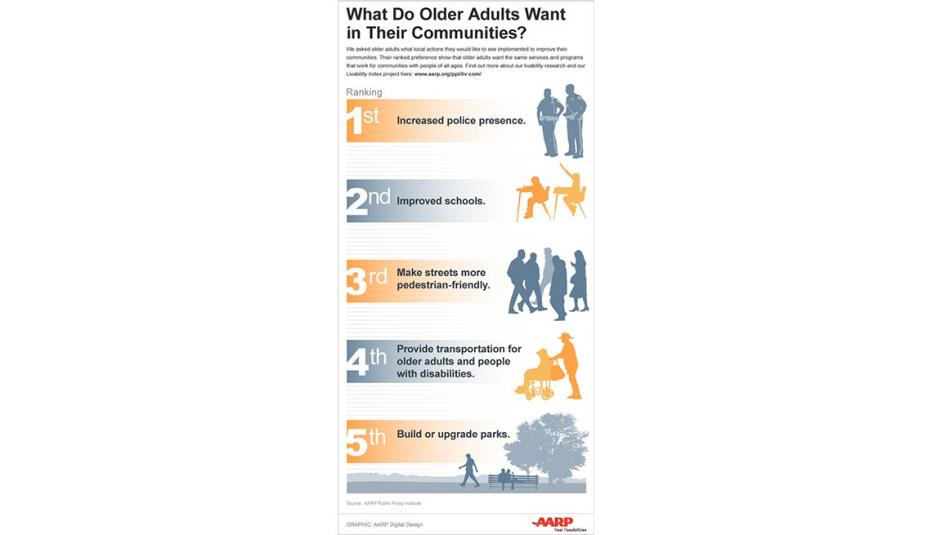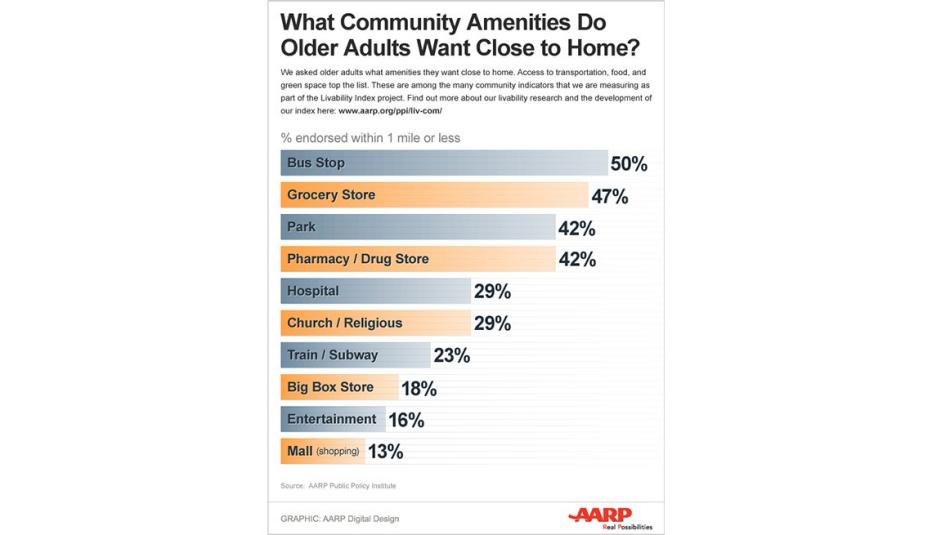AARP Hearing Center
This report explores the meaning of livability and describes lessons learned by PPI as part of its work to measure community livability and quantify the degree to which a community has the elements that are necessary to meet individual needs regardless of age, income, physical ability, ethnicity, and other factors. This work also includes findings from an individual community preference survey of older adults.
Lessons learned:
1. Individual definitions of “livability” can include issue areas that may or may not be addressed by public policy.
2. People and communities have differing perspectives: one type of community does not fit all.
3. Perceptions of a livable community are made when choosing housing, and they may not change as the person ages, unless a major life change forces a new perspective.
Key Findings:
General findings about the population ages 50 and older:
- Most of the 50+ population want to age in their homes and communities.
- The importance of proximity to community elements varies greatly.
Household income influences thoughts about the importance of local government spending priorities:
- Increasing police presence and improving schools are key government services for most of the older adult population, but different groups rank other local actions in widely varying ways.
- Most non-drivers say they live in communities that are already pedestrian-friendly.
Findings for subgroups within the population ages 50 and older:
- There are modest racial and ethnic differences in priorities, but there are great differences in the places where different groups connect with community members.
- Personal safety is more of a concern for family caregivers, for people with disabilities, for nondrivers, and for people with lower incomes.
- Most nondrivers say they live in communities that are already pedestrian-friendly.
- Specialized transportation and local government decision-making processes are important issues for people with disabilities and for family caregivers.
- For renters, funding for affordable housing programs is the most important local government investment.


































































